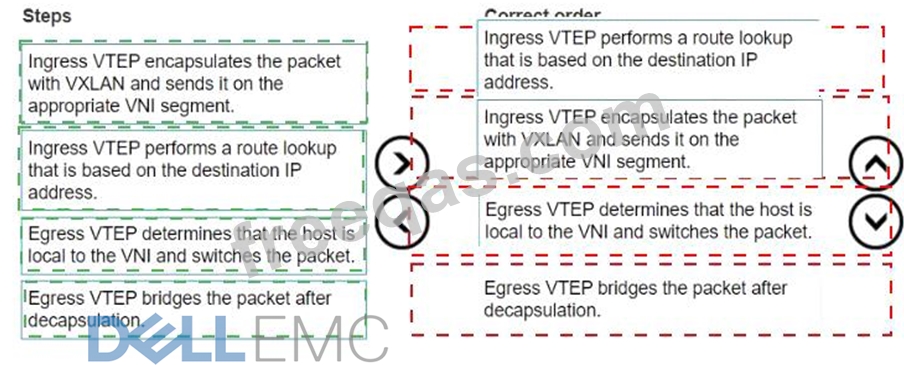
Explanation:
* Ingress VTEP performs a route lookup that is based on the destination IP address.
* Ingress VTEP encapsulates the packet with VXLAN and sends it on the appropriate VNI segment.
* Egress VTEP determines that the host is local to the VNI and switches the packet.
* Egress VTEP bridges the packet after decapsulation.
Steps and Correct Order:
* Ingress VTEP performs a route lookup that is based on the destination IP address.
* The ingress VTEP (Virtual Tunnel Endpoint) first needs to determine the next hop for the packet.
This involves performing a route lookup using the destination IP address.
* Ingress VTEP encapsulates the packet with VXLAN and sends it on the appropriate VNI segment.
* Once the route lookup is complete, the ingress VTEP encapsulates the packet in a VXLAN header, which includes the appropriate VNI (VXLAN Network Identifier) segment, and forwards it.
* Egress VTEP determines that the host is local to the VNI and switches the packet.
* The egress VTEP receives the encapsulated VXLAN packet, decapsulates it, and then checks its local VNI to determine if the destination host is within the same VNI.
* Egress VTEP bridges the packet after decapsulation.
* After determining the destination host's locality, the egress VTEP bridges the packet to the appropriate interface to deliver it to the final destination.
References:
* Dell Technologies Networking - SONiC
* Dell Enterprise SONiC Deployment Guide
These steps provide a comprehensive guide to understand the correct order of operations in asymmetric IRB (Integrated Routing and Bridging) frame encapsulation within a VXLAN environment.




